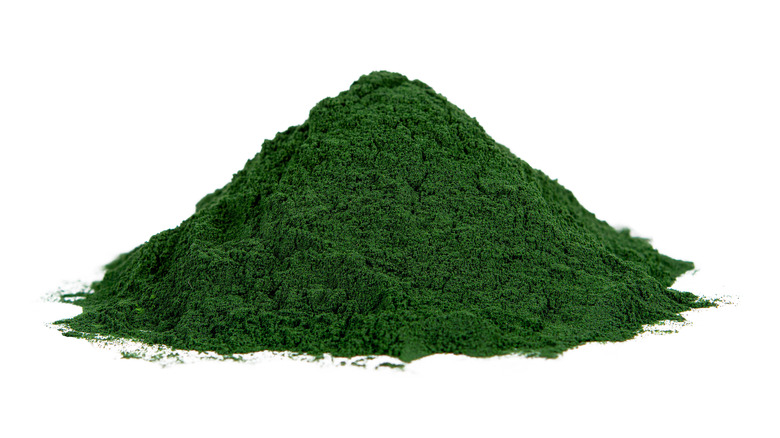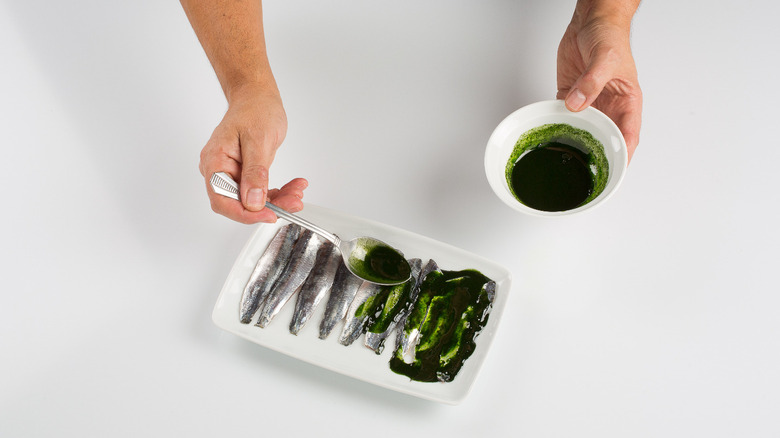The Wonders Of Powdered Plankton, Explained
Depending on your generation, the word "plankton" first brings to mind either Krabby Patties or whale food. Maybe plankton's not exactly something you'd imagine whisked into a sauce and plated at a gourmet restaurant, or used as an ingredient at all. The kind fit for human consumption is a strain of phytoplankton, a vital plant life also known as microalgae that produces an estimated 80% of the earth's oxygen.
Dried and powdered, the plant is a bright green wonder ingredient, though its strong, oceanic scent will hit you first. The stuff packs quite a punch — only a tiny quantity is needed to infuse a dish with its unique flavor, which is subtle and briny. Those who compare the flavor to shrimp would be right; shrimp eat plankton, after all. Powdered plankton can be used in a variety of dishes to add a complex taste and a rich, creamy texture. It's especially effective at adding depth and aroma to sauces, soups, and seafood dishes, though its uses continue to expand.
For instance, Chef Ángel León believes it matches well with sushi and sashimi. León is credited with introducing the ingredient when he incorporated it into a 2011 mackerel dish at his Michelin-starred restaurant "Aponiente." Since then, the use of the ingredient has undoubtedly spread far beyond León's kitchen.
Where powdered plankton comes from
While our species has a long history of eating seafood, plankton is a relatively recent addition to the menu. Powdered plankton isn't just scooped out of the ocean, but farmed. Plankton producer Fitoplancton Marino in Spain — the same producer that first partnered with Chef Ángel León — had to go through an extensive process for novel food approval in the European Union. Production remains limited and dried plankton remains expensive, with a 10-gram glass costing north of $50.
This isn't stopping high-end chefs from using the ingredient, though. Take British chef Matt Worswick, who dresses his hand-dived scallops in a plankton beurre blanc as rich in flavor as it is in texture. Other notable uses of the ingredient include León's own squid risotto, Romain Fornell's plankton mayonnaise, and linguine with Plancton Marino at Gem 42. Maine importer Browne Trading suggests using Plancton Marino alongside caviar on poached oysters.
Scientists have identified the specific molecules responsible for both the earthy aromas of the plant and its salty sea taste, but the scientific wonders of plankton go beyond its taste. Rich in omega-3s, magnesium, iron, and calcium, plankton also boasts potential health benefits like detoxification and mood improvement. The powder appears to defy culinary categories — is it a spice? a vegetable? — but this only seems to help the versatile ingredient on its rise from tiny sea plant to fine dining staple.

